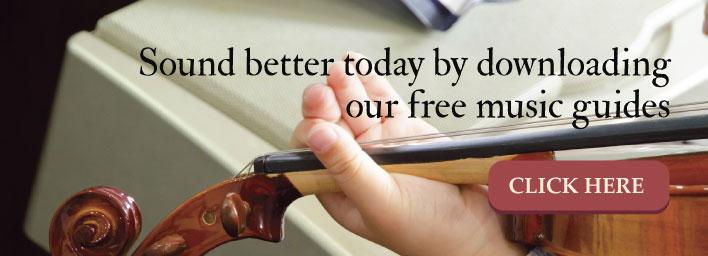
Mathematics is a subject that many students struggle to master. Concepts like fractions, sequencing, and solving for unknowns seem foreign and confusing at first, and since each new aspect builds on what has been previously learned, students who have trouble early on rapidly fall behind. And while new methods have been developed and instituted to teach math, often these “new” ideas make the most basic concepts even more baffling.
If, as a student, you’re having a hard time with math, you’re not alone. But, did you know that there is a sure-fire, fun way to improve your math performance? Plus, it doesn’t involve an expensive investment in fancy tutoring or require that you give up all of your extra-curricular activities and pursuits. Believe it or not, you can enhance your comprehension and earn higher marks on your report cards and tests by embracing music education.
Scientific studies and focused research projects over the past few decades have expanded what’s known about the benefits of learning music. In addition to improving your academic scores, learning to play, read, and understand music has the power to develop new connections in your brain. Connections that enhance your memory, coordination, and sensory perception abilities for years to come. Yet, music is particularly helpful for forging the specific pathways that are required for understanding math. Indeed, the very nature of music is mathematical.
Fractional Divisions
All music is based on a specific measurement, which establishes the rhythm. For instance, the melody of the forest at night or even the rhythm of a busy highway can be measured with the correct timing. In music, each bar (or measure) follows a specific time and contains a specific number of beats. And although you can change the tempo, the rhythm is created by the time signature. Notes are also used as a double form of measurement, both as a way to measure the frequency of the sound vibrations for pitch, and for determining the length of a particular note.
Likewise, many math concepts deal with interpreting and calculating measurements accurately. Learning how to make these musical divisions and recognitions (like intonation—the ability to hear the accuracy of the pitch) effortlessly, builds automatic pathways in your brain that associate with math concepts. Many geometric, pattern, and fractional applications are easier to understand because of the intuitive connections that music establishes.
Understanding Notation
Reading music is much like reading mathematics. The note shapes represent a fractional portion of each measure, and the time signature is written using integers as a fraction. The bottom number of the time signature tells players and singers which note counts for a single beat and the top number refers to the number of beats in each measure.
For example, in 4/4 time (also known as common time), the four on top tells the musician that there are four beats in each bar, and that the quarter note represents one beat. To accurately play music, you very quickly learn to divide, multiply, and combine fractions to create a melody.
Moreover, each piece of music contains a key signature. Sharp and flat signs located directly after the clef on specific lines and spaces on the staff indicate the key of a composition. In mathematics, the distributive property works the same way.
Patterns, Pythagoras, and Fibonacci
In addition to fractional divisions, music conforms to a number of mathematical concepts. The Fibonacci sequence (which is prevalent throughout nature) involves adding terms in a sequence, 1, 1, 2, 3, 5, 8, 13, 21 … creating a ratio between each term that is known as the golden ratio, 0.61803398875. Understanding this proportional relationship is chiefly important in performing geometric calculations and building structures. Essentially, all music scales and note sound frequencies follow the Fibonacci sequence.
Without delving further into the more advanced mathematical concepts involved, it’s easy to see that music in its most fundamental form is based on math principles. However, because these concepts are cloaked in musical applications, it’s easy for your brain to make the associations unconsciously. Learning to read and play music provides you with the cognitive connections that are necessary for immediate recognition and retention of the knowledge you’ll need for a variety of math courses. Plus, it’s really fun and provides you with a lifelong skill.
No matter what grade level you’re at, learning music can provide you with the help you need in your mathematics classes.


